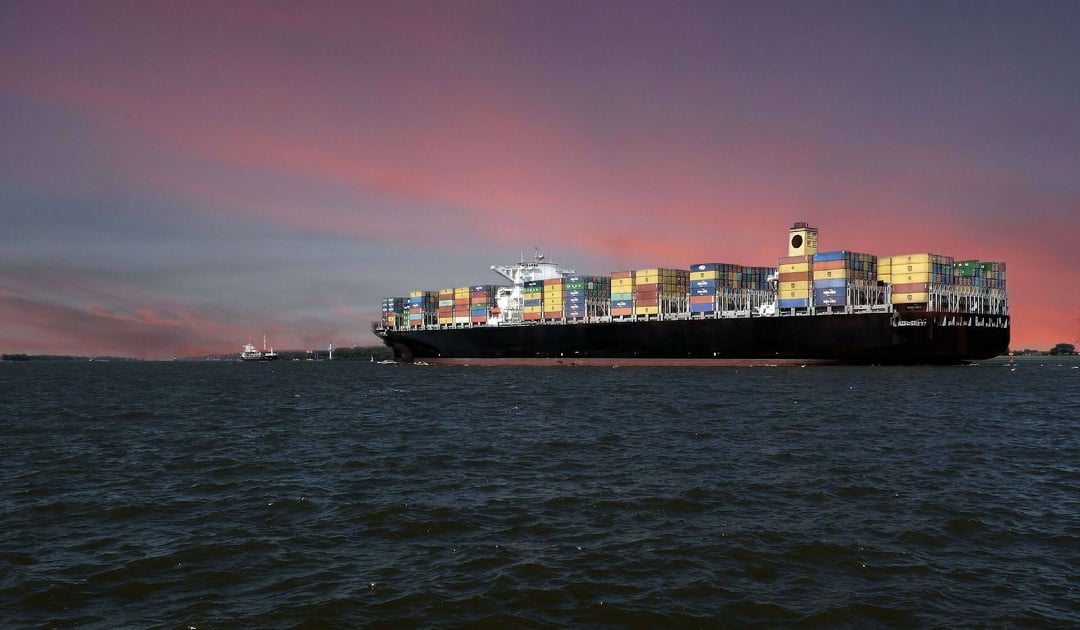
The purpose of a container ship in the supply chain is in essence to connect the global economy. Container ships carry cargo across oceans, providing the main physical link between products produced internationally and the customers who use them. Casual observers may not realize just how important the container ship remains in the era of air freight. But even now, it's estimated that more than 80% of global goods are transported across oceans via ship. That indicates the international shipping industry continues to serve a vital purpose in the supply chain. Container ships go by many names, cargo ships, freighters, ocean liners, steam ships (whether they're steam powered or not), and sometimes simply skipping the space bar with containerships and steamships. We may jump between a few of these terms in this piece, but the gist remains the same.
How does cargo shipping work?
When it comes to transport of most goods, cargo shipping works around the container. That is, containers - typically of the 40' variety for ocean transport - are loaded at a manufacturing facility or distribution center. They can be moved from there via truck or rail - or a combination of the two - to a port. At the port, the container is transferred onto a ship to make the longest part of the cargo shipping journey - across the ocean, before the whole process is reversed at its destination. That means the container is transferred back onto truck or rail, or a mixture of both, or transloaded. Then the goods are distributed onto their final destination, which is eventually the consumer. Cargo ships do not always transport via container if their load involves certain types of freight, like coal or gas, but for our purposes we're focusing on those that do.
What do container ships carry?
Container ships carry just about any type of good one can think of, from food to clothing to fuel to furniture to electronics to vehicles to beauty supplies to household cleaners to...the list goes on. Container ships carry these goods internationally across oceans. Most goods are transported via shipping container - a step along the intermodal transportation chain - then transferred to trucks and/or rail. Some goods may require a bit more TLC, like perishable food requiring temperature-controlled (or reefer) transport or gas and oil requiring tankers.
What are the advantages of cargo ships?
The advantages of cargo ships are numerous, offering many reasons why they continue to be so heavily used. They include:
- Cost
- Flexibility
- Capacity
- Environmental friendliness
To expand on these points, let's start with cost. While air freight is obviously faster, it typically costs in the neighborhood of five times more than the sea-going option. It is important to note the most savings is realized the larger the load. Next, flexibility is great with ocean shipping, allowing for large loads, oddly sized items, heavy loads, hazardous materials and more. This relates to the follow-up, capacity, as the sheer size of container ships offer capabilities for more goods - with the ability to transport stacks of containers both above and below deck.
And finally, another advantage is environmental friendliness. Studies show cargo ships are the most environmentally form of transport. Compared to planes, they're roughly 20 to 30 times better in terms of carbon footprint. A Defra study in The Guardian compares the carbon footprint for a two ton load going about 3,000 miles. Via small container ship it creates 150kg of CO2e, compared to 6,605kg of CO2e if the same load ships via air freight.
What is the container shortage?
It is impossible to write about container ships in 2021 without mentioning the container shortage elephant in the room. In short, the pandemic-related pause on the economy followed by a roaring consumer-good restart placed containers at a premium. And the world has yet to catch up due to labor challenges, varying lockdown statuses, material shortages, and again, increased demand.
In fact, estimates have a few million containers sitting empty, away from ports. Ocean freight operators are trying to change that, by putting a ticking clock on the return of empty containers to ports with financial penalties attached to missed deadlines. And even for those fully compliant, the fees to use a container are up 125% or more in some circles. Not coincidentally, container lines are looking at record profits this year and next.
How to solve port congestion
While using a container ship offers many advantages, one major obstacle in need of solving is port congestion. Throughout the year, port congestion has reached unprecedented levels for a variety of reasons - including a trifecta of shortages: labor, containers, and warehouse space. Congestion has been especially bad at the major ports of Long Beach and Los Angeles, though there has been some reason for optimism lately. Solutions have included new queueing systems, increased 24 hour port activity, staggering shipments, and considering alternate ports of entry - though that's not without its own set of consequences.
If you're ready to take the next step, at InTek Freight & Logistics, we can help. Just tell us what you need and we'll discuss how our expertise can help with the unique shipping challenges your business faces. Rather do a bit more research first? View our Freight Guides for comprehensive articles and eBooks on all things freight and logistics.
- Domestic Freight Services: Intermodal, Truckload, LTL
- Outsourced Managed Transportation Service Solutions
Get Updates
Featured Articles
Categories
- Freight & Shipping Costs (54)
- Freight Broker (60)
- Freight Forwarder (2)
- Intermodal Transportation (184)
- International & Cross Border Logistics (43)
- Logistics & Supply Chain (420)
- Logistics Service Provider (77)
- LTL (39)
- Managed TMS (49)
- News (39)
- Supply Chain Sustainability (12)
- Transportation Management System (37)
- Truckload (122)
- Warehousing & Distribution (50)



